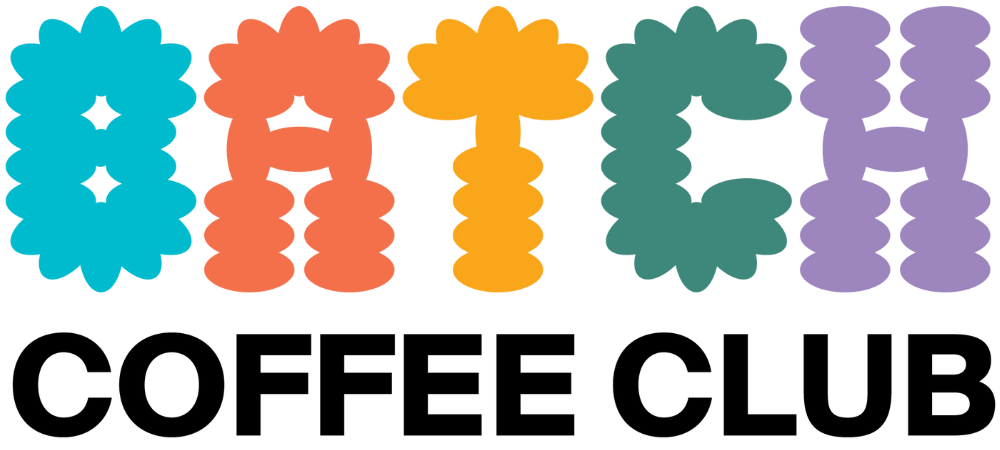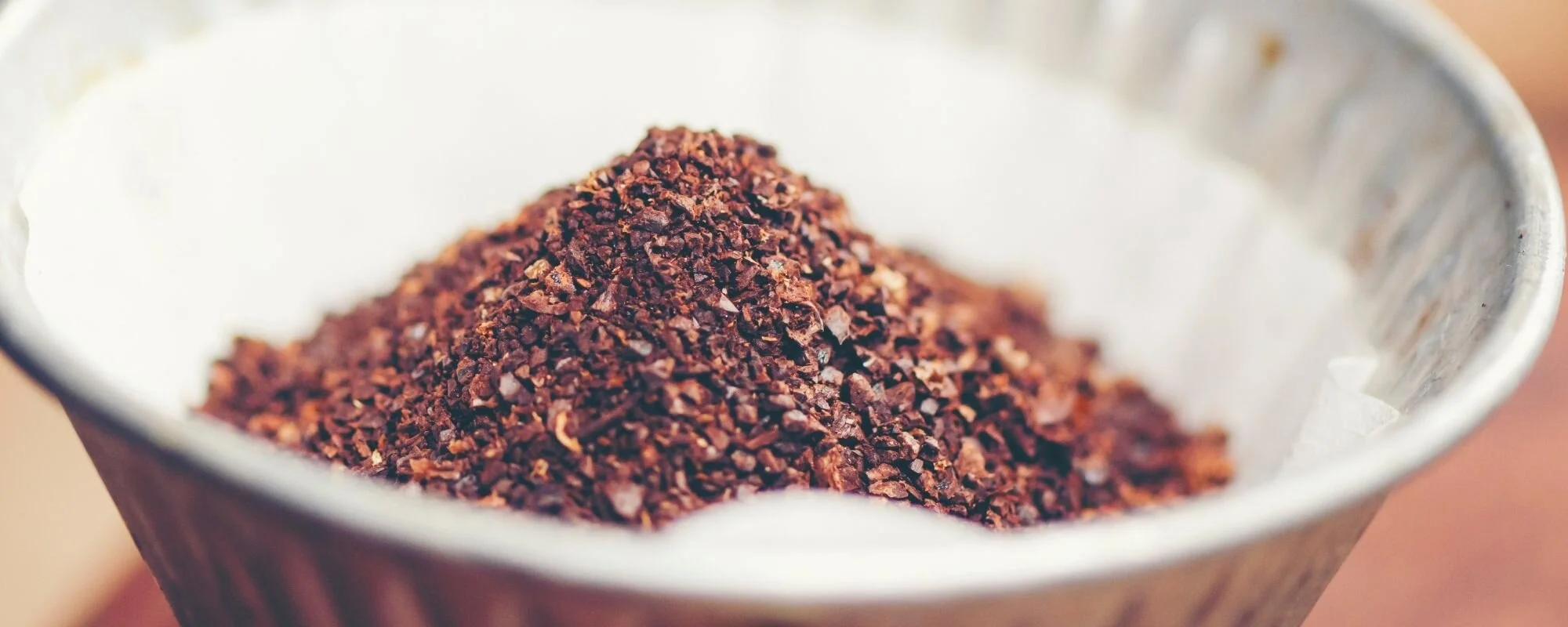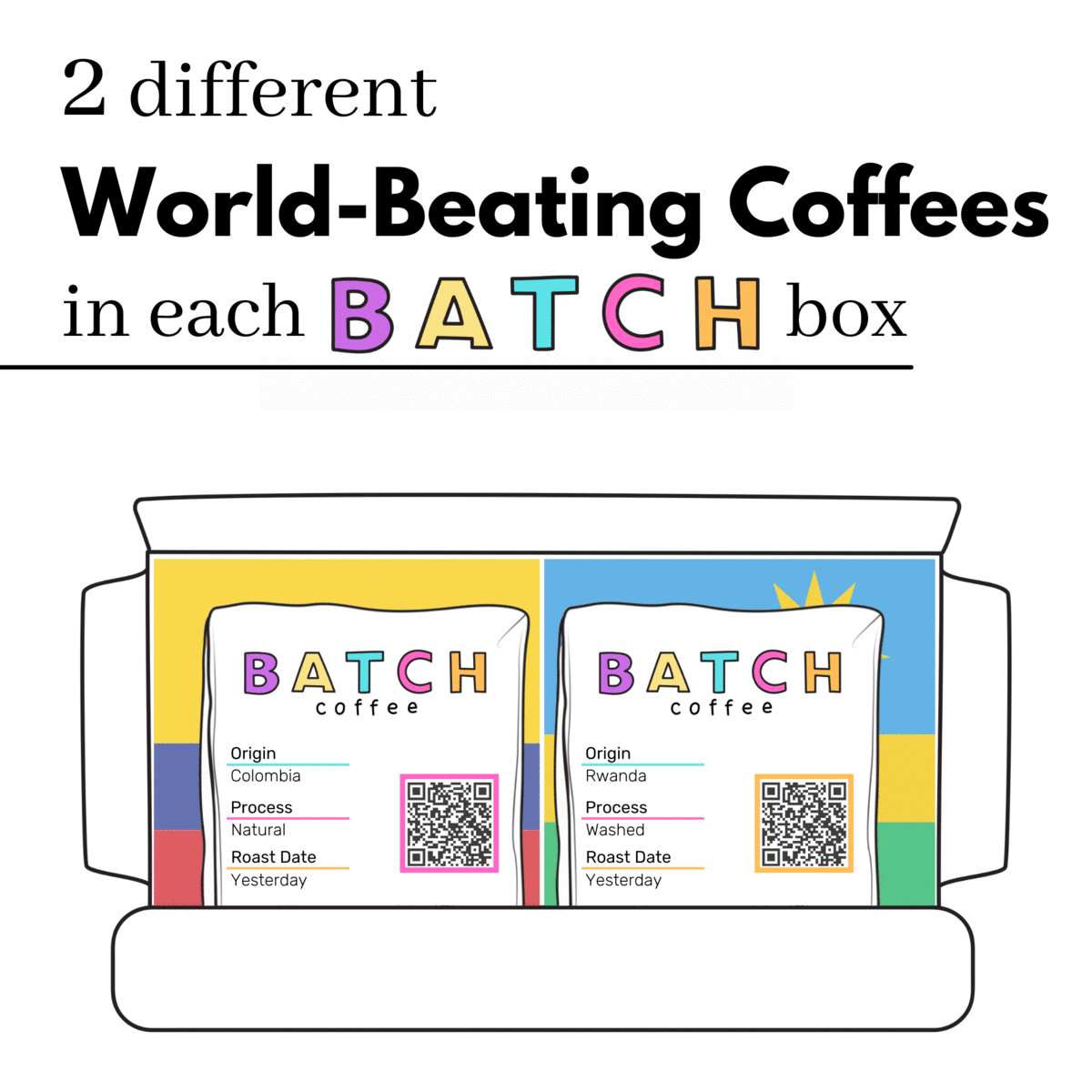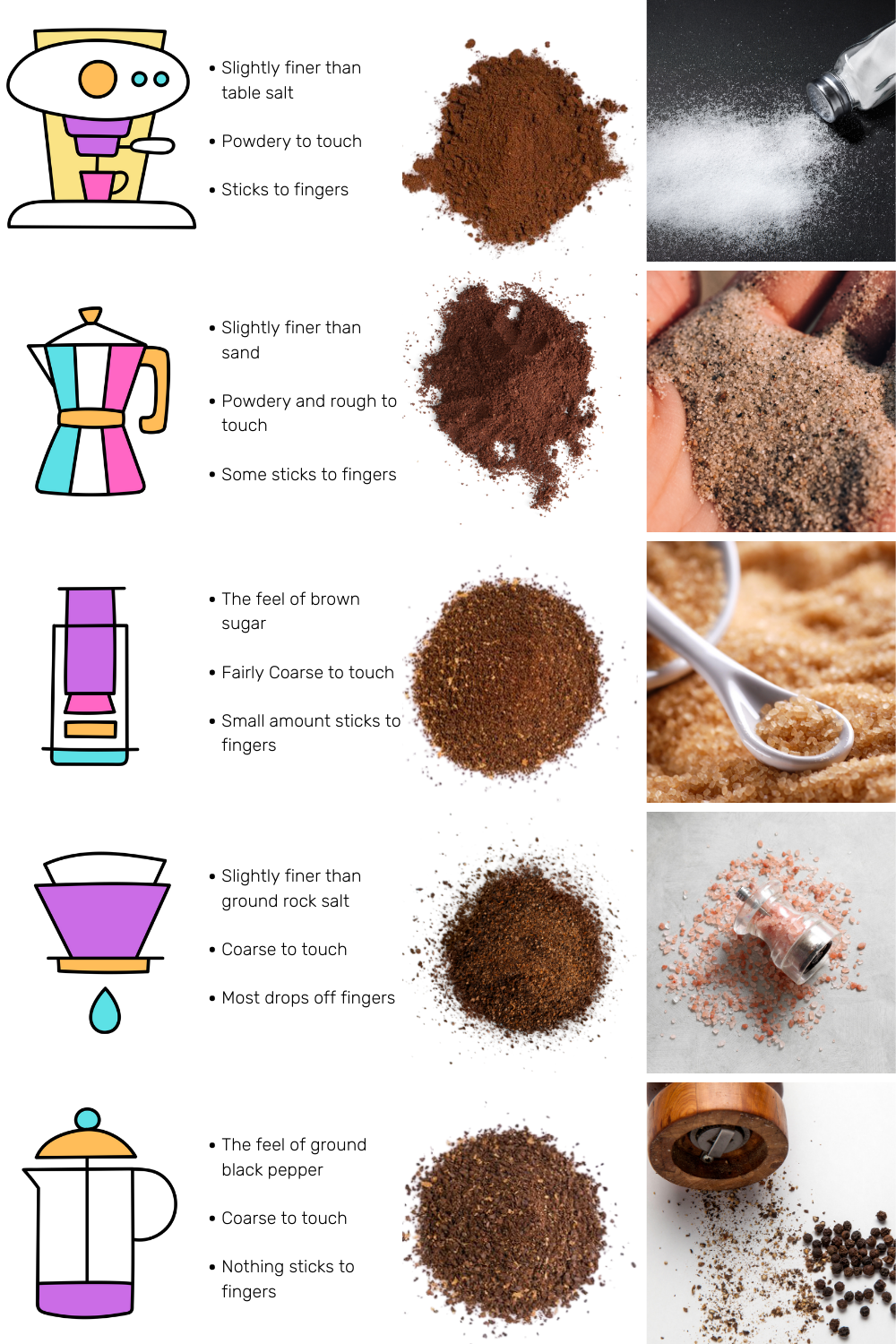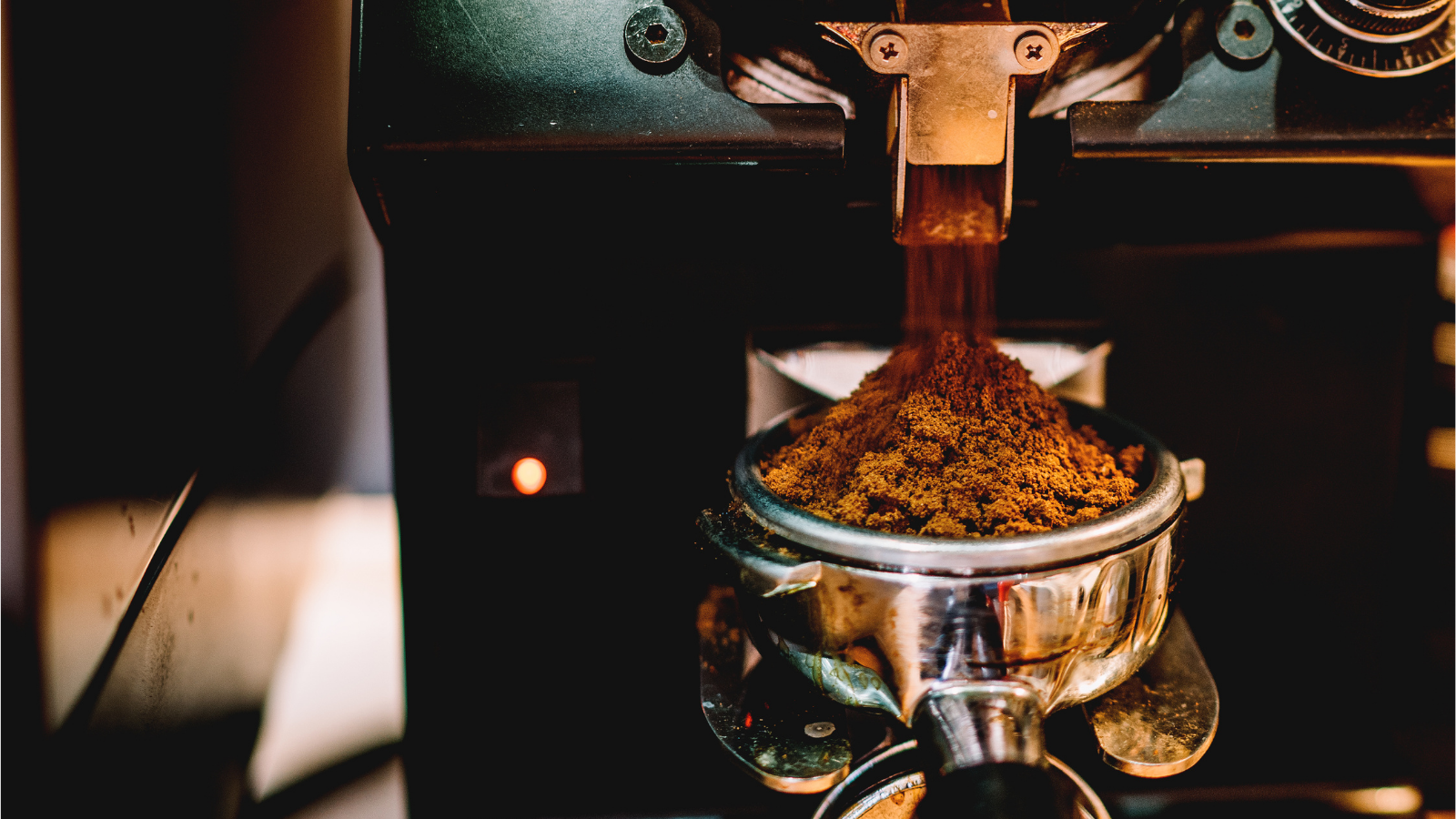A Guide to Grinding Coffee Beans
If you buy coffee beans then it must mean that you have a coffee grinder, unless you’re covering them in chocolate and flogging them at a local makers market.
Something that isn’t always considered when people dive into speciality coffee is there is a skill to grinding coffee beans.
It’s something that I never even thought about when I would lump a few tablespoons of Asda ground coffee into my cafetiere at university.
Ground coffee is ground coffee, right?
Wrong.
Ground coffee can be many different levels of coarseness that when brewed incorrectly can leave you will a cup of coffee that could make a grown man cry.
So take a look at our guide below for grinding coffee beans like a pro.
First of all a little bit of science.
When grinding coffee beans, the grinder basically breaks down the beans into tiny little fragments of coffee that should all be the same size (we will go into various types of grinders below).
The ground coffee is eventually mixed with water which extracts the soluble materials from the fragments of coffee.
Brewed coffee contains the soluble compounds of caffeine, acids, lipids, carbohydrates and sugars.
Generally, If the coffee grounds are too fine there is a larger surface area.
When brewing, the water extracts all of the compounds and then starts breaking down the plant fibres that make up the coffee, this normally has a bitter sort of taste (over-extracted).
While on the other end of the grind scale, when a coffee is too coarse, the surface area is small.
When brewing coffee that is too coarse, the water doesn’t extract enough of the sugars needed to balance out the acidity from the first part of the extraction.
The coffee in this case will taste sour and sharp (under-extracted).
Acids in speciality coffee are seen as a good thing when balanced coffee can taste like citrus fruit and add to the brightness of the coffee, some people, however, do have certain health issues that prevent them from drinking even mildly acidic drinks, here are the best low acid coffee brands.
Variables of Coffee Brewing
Now each method of brewing coffee has a variety of different variables; water temperature, water pressure, agitation, submergence and of course grind size.
Keeping as many as possible constant and altering one variable at a time when you have an under or over extracted coffee is the path to coffee perfection.
Water Temperature
This is fairly easily controlled depending on your choice of method and whether you have a thermometer.
It is something that is fairly black and white and easy-ish to control.
Pressure
Pressure is something that is only really applicable for espresso machines. Most commercial espresso machines operate at about 9-bar of pressure while domestic espresso machines vary.
It’s a variable that usually remains constant so you can adjust other variables (like grind size) accordingly.
Agitation
This is something that is used in many filter methods.
An Aeropress, for example, has many recipes calling for a stir, this can speed up the extraction but trying to measure a stir can be quite hard from person to person.
Checkout cafetiere vs filter coffee.
Submerging
Submerging the coffee is something that happens in many filter methods too.
A french press for example you submerge the coffee for a set amount of time while a Chemex has water poured through the coffee grounds.
When you set all of your variables constant you will know the reason why your coffee isn’t as good as the last is because your grind wasn’t quite right.
After you’ve done this a few times you should be able to feel the coffee grounds between your index finger and thumb to tell whether the grind is good.
Espresso machines force hot water through a bed of coffee with each extraction taking around 25 seconds.
Changing the grind size is a constant battle where even some of the best home espresso machines lack consistency in terms of pressure.
They were invented in Italy in the 19th century so the commuters of the day could perch at the coffee bar for a minute or two before hitting the office.
As the water temperature is really hot (around 96 degrees) and is forced through the coffee with an almighty force the coffee can be ground fine.
Trying to explain how fine to grind coffee is fairly subjective but we have done our best with the array of infographics.
The texture will be similar to table salt but slightly finer and powdery.
Espresso is quite an easy one to figure out though if you don’t mind a bit of trial and error.
Do your best to try and find a grind size from the images above. Now make an espresso coffee using your espresso machine*.
If the brew takes longer than around 25 seconds**, water is struggling to pass through the coffee because it’s too fine so make the grind coarser.
If it’s less than 25 seconds the water is passing too freely through the coffee which is too coarse, so make the grind finer. Keep doing this until you have a coffee that extracts in 25 seconds.
To find out more about the inner workings of an espresso machine visit Espresso Outlet.
*Using a dose (amount) of coffee that is recommended for the machine you have. Commercial portafilters usually have a basket that will take 18-21g of coffee but domestic espresso machines can sometimes only fit 12g. This will also affect the yield which is roughly twice the weight of the pre-brewed espresso ground coffee.
**this is an average time that people change depending on the coffee and the machine - see what works best for you.
If you’re thinking about buying a grinder for your espresso machine, take a look at our Sage Coffee Grinder Ultimate Guide.
Stovetop coffee makers use pressure and extremely high heat to pass water through coffee grounds.
The pressure is not as high as with an espresso machine but the water temperature is boiling which forces the stream through the bed of coffee.
Again take a look at the graphics for an idea of where to start in terms of grind.
You’re aiming for something a little coarser than espresso but still fine enough to extract the oils needed to create the beautiful velvety coffee maker Italian can achieve. It will feel a little like sand.
With a stovetop it’s a little harder to use the trial and error technique used with the espresso machine above because the temperature of the hob is a fairly hard variable to control.
However as long as your coffee to water ratio is consistent (we use 1:15) and you follow the other steps like pouring boiling water into the chamber before brewing, then you’re looking at around a 2 minute brew time.
If it’s over 2 minutes try making your coffee coarser and finer if it’s under 2 minutes.
Aeropress coffee is one of our favourites here at Batch and is a brew method we use to taste coffees that we include in our coffee subscription.
The consistency of quality coffee coupled with its fun and durable design make it a hard one to beat.
Its design and functionality also make it a tough one to pinpoint a grind size too.
Aeropress are pioneers in change and evolution in the specialty coffee world, their brew method has thousands of recipes each calling for various amounts of water, coffee, agitation, pressure and of course you guessed it grind size.
That said, the classic Aeropress recipe could be said to perform best using a medium grind (normally notch 5 out of 10 on a commercial retail bag coffee grinder).
The coffee will feel like brown sugar, a little will stick to your fingers like flour when you touch it but most will drop off.
A good test with whether you have the right grind setting for aeropress is whether you feel pressing down is too hard or easy. If when you’re extracting the coffee it takes a lot of force to push the brewed coffee out then try and make the grind coarser. If it feels too easy to extract then make the coffee finer.
This is certainly not the case all the time with Aeropress but a good rule of thumb.
A pour over method uses hot water to drip over a bed of coffee grounds and extract only the soluble compounds that can pass through the filter.
There is little pressure with a pour over method and the heat stays at around 93 degrees, the constant flow of water means the brewing water does not get over saturated with coffee solubles and extracts quite efficiently.
The perfect grind size for a pourover is about medium to coarse. A sort of ground rock salt, when you rub it between your finger and thumb you should be able to sprinkle most of it off with very little smaller floury grounds sticking to your fingers.
A fairly easy test with pour over is to gauge how long the brew takes. A method that calls upon a decent set of scales with a timer on, as long as all of your variables are constant and you have let the coffee bloom then if your brew time is longer than the recipe states then adjust the grind coarser and finer if it is too quick.
Use this grind setting if you use a filter coffee machine too.
Check out our article for an in-depth look at Pour Over Grind.
A cafetiere is an immersion method of brewing coffee meaning that the coffee is completely submerged in water for the majority of the brew.
As the coffee submerges into the water the extraction begins at a fast rate, it gradually slows down because of the drop in temperature of the water as well as the water becoming saturated in coffee solubles.
As water is in contact with the coffee for such a long time the coffee needs to be ground fairly coarse, otherwise the water will start to extract the plant fibres of the coffee and taste bitter.
Other than a cold brew, a cafetiere/french press uses one of the coarsest settings on a grinder. You shouldn’t really have any floury coffee grounds left on your fingers when you rub it. It should be that of ground pepper.
The type of grinder that you use is very important to making a great cup of coffee.
Sometimes coffee shops will invest in a grinder first before an espresso machine, this is because without a good enough grinder you simply cannot make a great coffee.
There are many grinders on the market at the moment. Aside from commercial grinders which we won’t go into here there are a few different types of domestic grinders listed below;
Manual Coffee Grinders
These handheld gadgets have been around since day 1 and used to be the only grinder on the market.
Today they have become a lot more efficient than the original style manual coffee grinder equipped with a coffee drawer.
They are perfect if you are just beginning your coffee journey and you brew the coffee in anything that requires a coarser ground than a stovetop.
They are also great to travel with (my trusty Hario grinder accompanied me around the world).
The good thing about a hand coffee grinder is that you have a lot of control with the grind size and when adjusting the grind you don’t have to purge like you would with an eclectic grinder and effectively waste the coffee.
The negatives are the motivation to grind the coffee yourself.
It is a labour of love and one that I did every day for a year while we lived in South America but it isn’t a quick push of a button job. It will take around 2 minutes to grind enough coffee to brew. It’s free exercise though!
Recently there seems to be a lot of manual coffee grinders on the market, some of which have a fairly high price point. The precision is getting sharper as is the ease of grinding coffee beans.
If you think you could see yourself with a hand grinder check out our article Top 6 Manual Coffee Grinders.
Electric Blade Coffee Grinders
These are the sort of grinders that you will see in many department stores that are sold pretty cheaply.
They basically act as a blender and rather than grinding the coffee they blend it.
Inspecting the blended coffee compared to ground coffee, at first sight, may seem identical however on brewing the coffee the difference will be significant when using speciality coffee.
The reason is, the blade coffee grinder breaks up the coffee grounds into uneven fragments of coffee, even when it’s fine the fragments will be completely different sizes.
This presents a problem when brewing coffee, as I explained above about the science of brewing coffee, the water extracts coffee solubles from the grounds creating coffee as we love.
If the coffee is too fine for the brew method it will be over-extracted and bitter and under-extracted and sour if it is too coarse.
With a blade grinder, you will be brewing different size coffee fragments in effect some will be over-extracted while some under-extracted (and some perfectly extracted).
This makes a pretty undesirable tasting coffee. So although the price tag is tempting, if you’re brewing good quality coffee, stay away.
Electric Burr Coffee Grinders
These are the perfect sort of coffee grinders for specialty coffee. Commercial coffee grinders use burrs (steel plates with ridges that rotate against each other) when grinding coffee beans.
They are manufactured to precisely alter the grind size while also grinding the coffee beans to a consistent level.
There are many domestic electric burr grinders on the market today at different price points.
Some of which are no different to the overall consistency of a commercial grinder other than the speed at which they operate.
Keep an eye out for the level of grind you are wishing to achieve as some electric burr grinders are specialised in filter methods and don’t grind fine enough for espresso.
If you like the sound of burr coffee grinders check out our Ultimate Guide on Burr Coffee Grinders.
Grinding coffee beans is not cheaper than buying pre-ground coffee.
The huge advantage of grinding your own coffee beans though is the huge difference in the taste of the coffee.
When coffee is ground it loses a significant amount of flavour after a matter of minutes. Grinding coffee beans at home is important if you purchase quality coffee.
Yes in a word. However, there is a little bit more to it than strength.
When you grind coffee too fine for your brew method the coffee will be over-extracted.
This means that the water has extracted all of the soluble compounds of the coffee grounds which include sugars, caffeine and acids, it then starts to break down plant fibres that make up the coffee which has bitter tastes.
Hence the bitterness is often mistaken for strength.
When Grinding coffee beans to make cold brew you should set the grinder to the coarsest setting.
The grind size needs to be coarser than a cafetiere/french press as you are brewing the coffee for a long time, the fragments need to be large so it doesn’t become over-extracted.
Roughly between 14g - 22g per cup, which is about 1 - 1.5 Tablespoons of coffee.
This will depend on the brew method and the recipe which you are using.
It completely depends on how serious you take your coffee.
Fresher is always better when it comes to coffee so try and grind your coffee beans right before you brew.
Having said that there may be circumstances where you can’t grind coffee in the morning (If you have a particularly loud grinder and you’re the first up) so grinding the night before won’t hurt you, it may just result in the coffees flavour not being as complex and prominent.
You can grind coffee straight after roasting (and cooling) the coffee.
The degassing of the coffee will speed up but the coffee shouldn’t be affected. You should brew the coffee between 5 and 21 days after the roast for optimum flavour.
